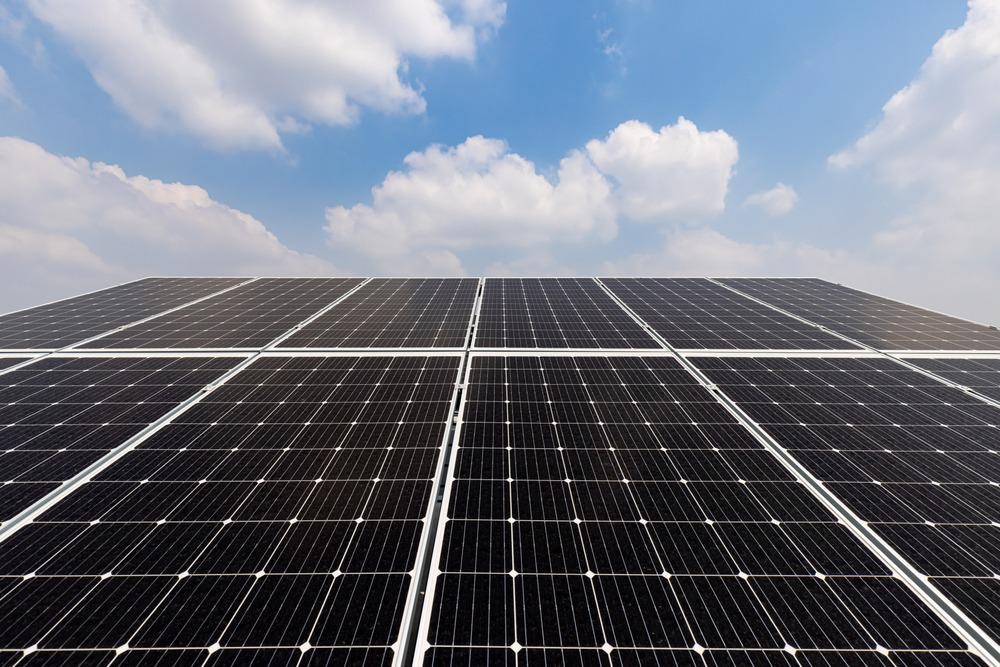In a study submitted to the journal Nano Energy, a variety of transition metal dichalcogenide and nitrogen-rich nitride heterostructures for solar evaporation of water were created through partly crystalline conversion namely WS2-W2N3, MoS2-Mo5N6, and NbS2-Nb4N5.

Study: Advanced 2D-2D heterostructures of transition metal dichalcogenides and nitrogen-rich nitrides for solar water generation. Image Credit: Zentinel/Shutterstock.com
Owing to their distinct physical and chemical characteristics, nanoscale particles of 2D transition metal dichalcogenides and higher-metal nitrides have shown great prospects for use in optoelectronics and energy storage applications.
Tackling the Water Crisis
With industrial and societal growth, fresh water shortage has begun to pose a major hazard to everyday living. Substantial endeavors have been made to investigate improved methods for creating drinkable water, such as reverse osmosis (RO), membrane distillation (MD), thermally distilling by bulk water heating, and electrodialysis.
Energy from the sun has been investigated for use in producing clean water using a solar to thermal (light-heat) transformation approach, which derives thermal energy from the absorbed solar power for evaporation of water. Photo-thermal substances – that serve as solar absorbers – have a wide light-absorbing range (280-2500 nm), significant absorbing strength and minimum reflectance or transmission which is required for highly efficient heat production in a sunlight-powered evaporative setup.
Limitation of Two-Dimensional Transition Metal Dichalcogenides
Due to their unique physicochemical characteristics, 2D materials like transition metal dichalcogenides (TMDs) and hexagonal boron nitride (h-BN) have been thoroughly researched and implemented in the fields of photothermal transformation, energy extraction, and water vaporization ever since the emergence of graphene. However, common TMD substances with bandgaps of ~1-2.5 eV capture short-wave solar radiation absorption, restricting their photo-thermal absorbance and transformation performance capacities.
Transition Metal Carbides/Nitrides Could be the Key
Transition metal carbides/nitrides (MXene-TMCs/TMNs) have an encouraging potential implementation in photo-thermal transformation owing to their unique EM wave absorbance capability and a localized surface plasmon phenomenon, leading to broadband (ultraviolet-visible-infrared) light absorbance and excellent photo-thermal transformation effectiveness.
When the metal atoms are in higher oxidizing states, the respective metallic nitrides are predicted to generate nitrogen-rich transition metal nitrides (NR-TMNs). These qualities may cause certain nitrides, such as NR-Mo5N6, to acquire metallic features, leading to increased electro-catalysis effectiveness in contrast with nitrogen-poor nitrides.
As a result, the creation of transition metal dichalcogenide NRTMNs heterostructures would offer a dependable method for broadening the spectrum absorbance range and increasing photo-absorption strength to achieve highly efficient photo-thermal functionality. More significantly, because of the improved oxidizing procedure, especially the sulfate radical-based procedure or the semiconducting photo-catalysis feature, such hetero-structured substances have a good capability to destroy biological contaminants in wastewater. Configurable fabrication of TMDs-NR-TMNs hetero-structures has not yet been accomplished.
Synthesis and Structural Assessment
In this study, the researchers investigated 2D-2D TMDs-NR-TMNs hetero-structures by partial crystalline transition. This method yielded a number of TMDs-NR-TMNs nano-films, including WS2-W2N3, MoS2-Mo5N6, and NbS2-Nb4N5. The anatomy of the material was studied using the technique of scanning electron microscopy (SEM).
All the anatomies of WS2-W2N3, MoS2-Mo5N6, and NbS2-Nb4N5 specimens displayed nano-film features, which were distinct from the bulk predecessors of WS2, MoS2, and NbS2. The microscale architectures were studied using transmission electron microscopy (TEM). The TEM findings verified that the TMDs-RN-TMNs hetero-structures exhibited nano-film architectures.
Key Findings of the Study
The researchers created a range of 2D-2D TMDs-NR-TMNs heterostructures for highly efficient sunlight-powered vaporization of water, namely WS2-W2N3, MoS2-Mo5N6, and NbS2-Nb4N5. The spectral absorptive capacity of such hetero-structured nano-films was higher than 92 percent. They were chemically stable in a variety of environments, including water, 1M acidic solution, and 1M alkaline solution.
More crucially, because of their broadband spectral absorbance, heat surface localization, and lower heat losses to bulk water, MoS2-Mo5N6/MF systems demonstrated a remarkable vaporization pace and efficiency. Furthermore, MoS2-Mo5N6/melamine systems demonstrated useful applicability in desalination processes for seawater. The present synthesis technique is thought to be capable of producing a varied range of 2D-2D hetero-structured materials like TMDs-carbides, TMDs-carbonitrides, and borides, as well as an abundance of high-quality compounds for energy purposes such as capturing solar energy.
Reference
Wang, L., Liu, D., Jiang, L., Ma, Y., Yang, G., Qian, Y., & Lei, W. (2022). Advanced 2D-2D heterostructures of transition metal dichalcogenides and nitrogen-rich nitrides for solar water generation. Nano Energy. Available at: https://www.sciencedirect.com/science/article/pii/S2211285522002737?via%3Dihub
Disclaimer: The views expressed here are those of the author expressed in their private capacity and do not necessarily represent the views of AZoM.com Limited T/A AZoNetwork the owner and operator of this website. This disclaimer forms part of the Terms and conditions of use of this website.